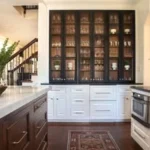Cabinet Finishes
The cabinet finish is critical to the look of the kitchen, and more than many other factors the finish of the cabinet can drive the cost of your project in sometimes surprising ways. Because the finishing variables are specific to each cabinet manufacturer, comparing finishes and costs can be complex and confusing. But there are some tried and true facts that you can keep in mind.
RULE #1: It may be hard to believe but it is true, painted cabinet finishes cost more than stain
RULE #2: If it is an uncommon finish or exotic (rare) wood species it's probably expensive
RULE #3: Specialty finishes such as distressing or glazing will increase the bottom line as well
RULE #4: Factory finishes will last the longest

CABINET PAINTS (OPAQUES)
Painted Cabinets have become one of the more popular design choices in recent years. If you are having a cabinet built locally you may be getting an actual painted finish, but most cabinet manufacturers today use what is known as a catalyzed varnish to achieve the opaque finish we refer to as painted. The catalyst is a chemical added to the finish to make it dry faster and harder so it more durable and they can offer better finish warranties.
Designer Tips
- A painted cabinet finish on tighter grained woods, results in a smooth finish. On coarse-grained wood like oak, the grain texture is partially visible under the finish.
- We recommend a catalyzed finish, because your cabinets take a fair amount of abuse and painted finishes are known to chip easily.
- You might be surprised to learn Painted Cabinets are more expensive than Stained Cabinets.

CABINET STAINS
It seems simple right? Rub on some stain, throw on a top coat, and bam, done! Oh no no no it is way more complex and way more boring😜 than that. For example, one of our cabinet lines, Mouser, has a 17 step process they go through just to stain your cabinets. 17 Steps! It is not unusual in the world of cabinet manufacturers to have so many steps to ensure a long-wearing finish that they can stand behind with strong warranties (sometimes lifetime).
Designer Tips
- If you find yourself having trouble choosing a cabinet manufacturer take some time to visit their website for information about their finishing process & their finish warranties. High-quality cabinets carry longer finish warranties.
- Light stains reveal more of the wood's natural character, while darker stains hide much of the grain, but create richer color and a more dramatic look.
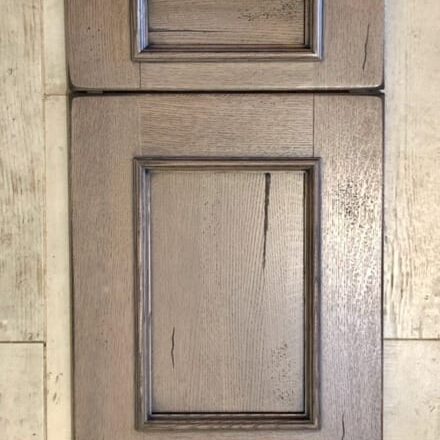
DISTRESSED CABINETS
This is the beating up of your cabinets for extra money.😜 Yes, you pay extra, and they beat your cabinets up. Distressing comes in all forms and in some lines, can be customized to as little or as much as you prefer. Some distressing techniques include rubbed through edges, wormholes, rock beating, scraping and ice chip gouging. Sounds high tech doesn’t it?
Designer Tips
- It can be difficult to compare distressed looks between manufacturers because there is no industry standard language for the different distressed finishes
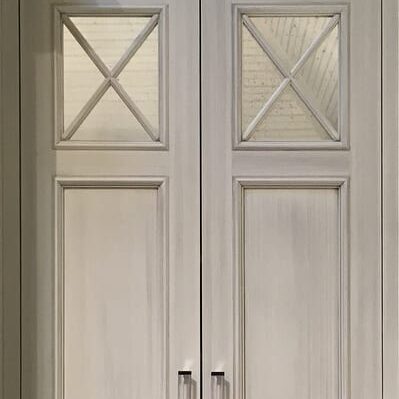
GLAZED FINISH CABINETS
Glazing is a finishing technique for stained or painted cabinets that highlights the contours of your cabinet doors, mouldings, and accent pieces. Glazes come in many color tones, adding warm browns, greys, and blacks to the finish of your cabinetry. A wet glaze is applied over the entire piece and then wiped off leaving accents in the grooves, edges, and details. A dry glaze is applied by hand specifically to the grooves and profiled areas to enhance the natural detail without changing the overall color of your cabinets.
Designer Tips
- Don't be caught by surprise, the wet glaze application changes the color of your cabinetry's finish
- Glazes can be applied in a linear or striated pattern creating interesting detail on the surface of your cabinets
- Not all manufacturers offer all glazing options, so be sure to confirm before making your cabinet selection
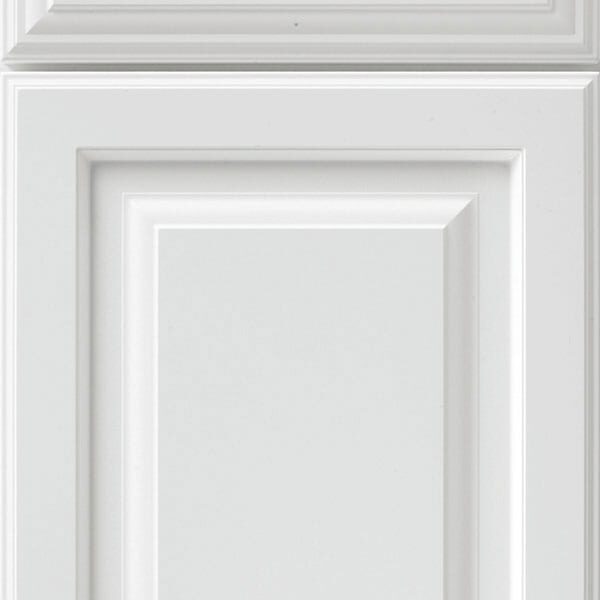
THERMOFOIL CABINETS
I am going to touch on this finish because it exists in the world of kitchen cabinets, however, it is not my favorite and we rarely sell it. Thermofoil is a technique that uses a thin plastic or "foil" finish (typically white) that is heat wrapped to a single piece routed MDF door to create a durable painted look. It is an inexpensive finish, and as such has some drawbacks.
Designer Tips
- the finish tends to look like plastic
- because it is a single piece routed door it doesn't have the real cabinet door look
- cannot be used for cabinetry that has sharp edges
- if exposed to high heat the finish will de-laminate and/or discolor
- Prone to cracking & peeling
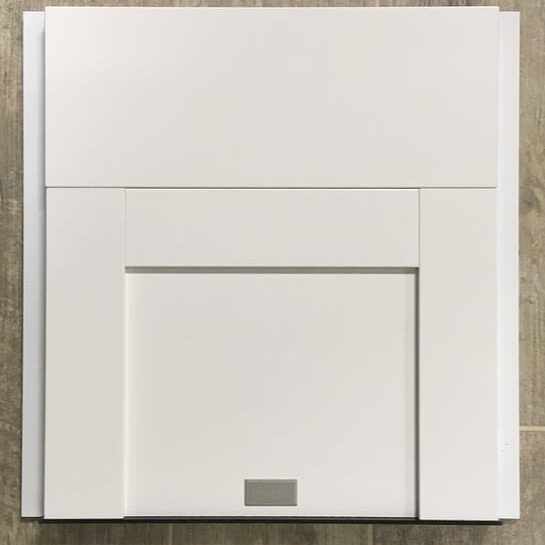
LAMINATE WRAPPED CABINETS
We carry an inexpensive line that has what they call Pure Style Laminate doors. The finish is durable like the foil but each piece of the door is wrapped before it is assembled allowing for the doors to look painted but at a much less expensive price point.
Designer Tips
- thicker laminate than thermafoil
- more durable than thermafoil
- looks more like a real wood door because assembled

FOIL & VENEER FINISHES
This can seem repetitive but it is a different category than Thermafoil or Laminate Wrapped Cabinets. When we talk about foils we are mainly referring to foil veneered finishes over MDF doors that are often the more exotic woods or high gloss finishes. Tiger wood and bamboo for example are often a veneer finish as well as paints that are so shiny they are like mirrored surfaces.
The exotic species of wood are not available in slabs of wood that cabinetry can be made from instead they only come in veneers.
Note about Custom Finishes:
There is a significant difference between a factory custom finish and a local cabinet shop custom finish. A factory finish begins in a dust-free finish booth. The guys applying the finish are decked out in hazmat suits and look a little like the CDC in a deadly virus zone☣! The suits help to ensure the air stays free of contaminants and dust particles. Then the cabinets go through a gigantic oven that seems like the size of a building! This process heat-cures the finish to harden it and ensure its longevity. The bottom line is ... the money you save with a local, custom cabinet maker isn’t worth the "wear and tear" you see almost immediately on the finish. A factory finish on stock, semi-custom, or custom cabinets is a far superior finish that will last and carry a strong (sometimes lifetime) finish warranty.


